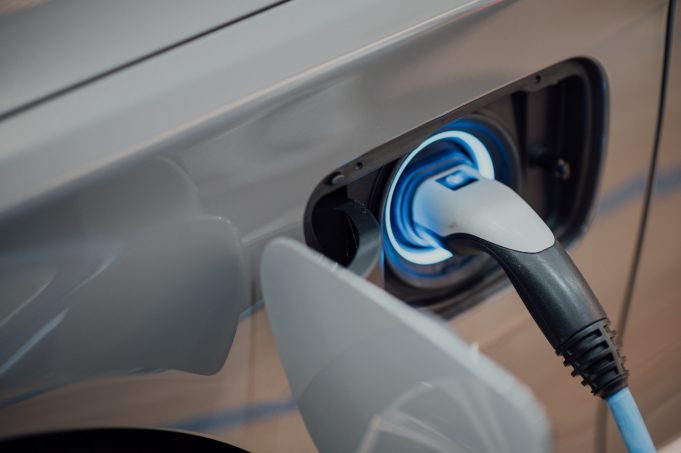Electric vehicles (EVs) are becoming increasingly popular as a sustainable and eco-friendly mode of transportation. With this trend, more and more companies are considering the adoption of EVs in their fleets to reduce their carbon footprint and operational costs. However, EVs require a reliable and efficient charging infrastructure, which presents a unique challenge for fleets and commercial applications. In this context, EV charging for fleets and commercial applications has emerged as a critical area of focus for businesses looking to transition to EVs.
We will explore the various aspects of EV charging for fleets and commercial applications. We will also discuss the different types of EV charging stations, considerations for selecting them, benefits of implementing EV charging, and successful case studies. Additionally, we will examine the challenges associated with EV charging for fleets and commercial applications and propose solutions to overcome them. Finally, we will look into the future of EV charging for fleets and commercial applications, exploring the technological advancements and policy developments that are shaping this field.
Types of EV charging stations
There are various types of EV charging stations available for fleets and commercial applications, each with different charging speeds, power capacities, and costs. The most common types of EV charging stations include Level 1, Level 2, DC fast charging, and wireless charging.
Level 1 Charging
Level 1 charging is the slowest charging option, providing a maximum power output of 1.4 kilowatts (kW) and requires a standard 120-volt household outlet. Level 1 charging is suitable for small fleets or commercial vehicles with limited daily mileage and longer idle times. The charging time for Level 1 varies depending on the battery capacity and state of charge (SOC) of the vehicle.
Level 2 Charging
Level 2 charging provides a higher power output than Level 1 charging, typically ranging from 3.3 kW to 22 kW. Level 2 charging stations require a 240-volt electrical supply and are commonly installed in parking lots or garages. Level 2 charging can fully charge an EV in 4-8 hours, making it an ideal option for overnight charging or extended periods of parking.
DC Fast Charging
DC fast charging provides the fastest charging option, with power outputs ranging from 50 kW to 350 kW. DC fast charging stations can charge an EV up to 80% in as little as 30 minutes, making it a suitable option for fleets with high daily mileage and limited idle times. However, DC fast charging stations require a high-voltage direct current (DC) electrical supply and are more expensive to install and operate than Level 1 or 2 charging stations.
Wireless Charging
Wireless charging, also known as inductive charging, eliminates the need for a physical connection between the charging station and the vehicle. Wireless charging uses a magnetic field to transfer energy between two coils, one in the charging pad and one in the EV’s charging port. Wireless charging is still in its early stages of development and has a lower power output than traditional charging options, making it suitable for low-power applications such as charging electric bikes or scooters.
Comparison of the Different Charging Types
When selecting an EV charging station for fleets or commercial applications, several factors need to be considered, such as charging speed, power capacity, cost, and installation requirements. Level 1 and 2 charging stations are suitable for fleets or commercial vehicles with lower daily mileage and longer idle times, while DC fast charging stations are more suitable for high-mileage vehicles that require fast and efficient charging. Wireless charging is a promising technology, but it is not yet widely available and has limited power capacity. Ultimately, the charging type selected will depend on the specific needs of the fleet or commercial application.
Considerations for selecting EV charging stations
When selecting an EV charging station for fleets or commercial applications, several factors need to be considered to ensure optimal performance, efficiency, and cost-effectiveness.
Power Capacity
The power capacity of an EV charging station determines the charging speed and the number of vehicles that can be charged simultaneously. The power capacity required will depend on the size of the fleet or the number of EVs that need to be charged. DC fast charging stations provide the fastest charging speeds, but they require a higher power supply than Level 1 or 2 charging stations.
Installation Requirements
The installation requirements for EV charging stations include electrical supply, site location, and infrastructure upgrades. The installation process can be complex and costly, and it is essential to assess the installation requirements before selecting a charging station.
User Needs
The user needs of the fleet or commercial application should be taken into consideration when selecting an EV charging station. User needs may include charging times, payment methods, user interface, and accessibility. EV charging stations with user-friendly interfaces, fast charging times, and multiple payment options are likely to be more convenient for users.
Network Connectivity
The network connectivity of EV charging stations is critical for fleet and commercial applications. The charging station should be compatible with the existing network infrastructure, allowing for remote monitoring and management of the charging process. Network connectivity can also provide data on charging patterns, usage rates, and energy consumption.
Cost Considerations
The cost of EV charging stations can vary significantly depending on the type of charging station and the installation requirements. It is essential to consider the long-term cost of ownership, including maintenance, repair, and energy costs. Additionally, incentives and subsidies may be available for installing EV charging stations, making them a more cost-effective option for fleets and commercial applications.
Benefits of EV charging for fleets and commercial applications
Deploying EV charging stations in fleets and commercial applications offers numerous benefits beyond just providing a convenient way to charge electric vehicles. Some of these benefits include:
Cost Savings
Electricity is significantly cheaper than gasoline or diesel, making EV charging an attractive cost-saving option for fleets and commercial applications. EVs also have lower maintenance costs due to fewer moving parts, longer lifespan, and fewer oil changes.
Environmental Benefits
EVs produce fewer greenhouse gas emissions than traditional gasoline or diesel vehicles, leading to reduced air pollution and improved air quality. By transitioning to EVs, fleets and commercial applications can contribute to a cleaner environment and help combat climate change.
Improved Brand Image
Deploying EV charging stations and transitioning to EVs can improve a business’s brand image, showcasing their commitment to sustainability and corporate responsibility.
Employee Satisfaction and Retention
Offering EV charging stations at workplaces can improve employee satisfaction and retention by providing a convenient and cost-effective way for employees to charge their EVs during working hours. It also shows that the company is committed to sustainability and cares about the environment.
Conclusion
EV charging stations provide numerous benefits for fleets and commercial applications beyond just providing a convenient way to charge electric vehicles. Considerations such as power capacity, installation requirements, user needs, network connectivity, and cost should be taken into account when selecting the right charging infrastructure. By doing so, businesses can reap the benefits of EV charging, including cost savings, environmental benefits, improved brand image, and employee satisfaction and retention.
As the demand for EVs increases, it is becoming increasingly important for fleets and commercial applications to transition to EVs and invest in charging infrastructure. By embracing EVs, businesses can take a proactive step towards reducing their carbon footprint, promoting sustainability, and providing a convenient and cost-effective way for their employees and customers to charge their vehicles. In the long run, transitioning to EVs and investing in charging infrastructure will not only benefit the environment but also lead to cost savings and improved operational efficiency, making it a win-win situation for all.










